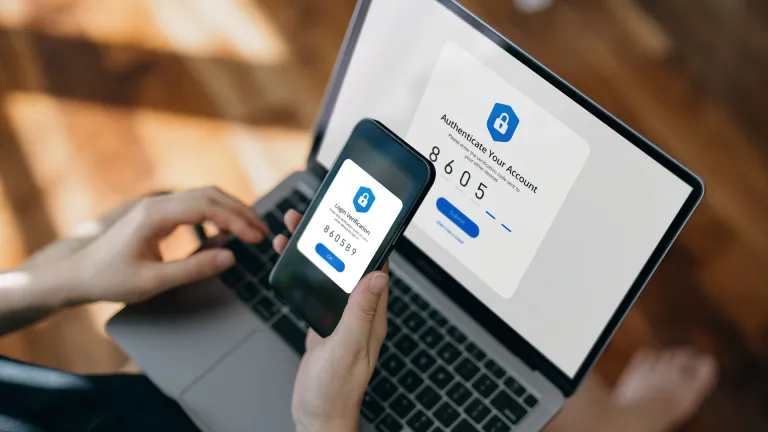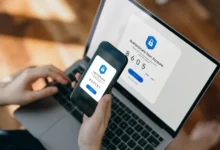Encrypted Apps Amid Cyberattack: Why Secure Messaging Matters

In a digital era marked by rising cyber threats, encrypted apps amid cyberattack have become a frontline defense for privacy and security. Whether you’re a business owner, professional, or everyday user, knowing how these apps work—and when to use them—can determine how well you protect your data.
This in-depth guide explores what “encrypted apps amid cyberattack” truly means, why governments and experts recommend them, how they function, their limitations, and how you can use them effectively. By the end, you’ll have a clearer path to safeguarding your communications in a world where breaches are constant
1. What It Means: Encrypted Apps Amid Cyberattack
When we talk about encrypted apps amid cyberattack, we mean mobile or desktop applications that use advanced encryption to keep your messages, calls, and files private—even if attackers are monitoring the network.
During a cyberattack, hackers may intercept communications, steal login details, or manipulate traffic. Encrypted apps convert your data into unreadable code that only the intended recipient can decode. Even if your data is captured, it remains useless without the secret key.
Using encrypted apps amid cyberattack situations ensures that confidentiality and trust remain intact, even when digital systems around you are under siege.
2. Why Officials Are Urging Their Use
Security agencies and cybersecurity experts around the world have repeatedly emphasized the need to rely on encrypted communication tools. Recent years have seen large-scale breaches affecting telecom providers, messaging platforms, and cloud storage networks.
Officials have advised the public and organizations to “use encryption wherever possible.” The reason is simple: when attackers gain access to communication infrastructure, only strong encryption ensures that message content remains unreadable.
Broader Reasons Behind This Push
- Data Privacy: Encryption safeguards personal and professional data from hackers, advertisers, or unauthorized surveillance.
- Protection During Breaches: Even if servers or networks are compromised, encrypted content remains indecipherable.
- National Security: For sensitive operations and defense communications, encrypted apps amid cyberattack are indispensable.
- Public Trust: Secure messaging reinforces confidence in digital interactions and online commerce.
In essence, encrypted apps are not optional anymore—they are a vital part of cybersecurity resilience.
3. How Encryption in Apps Works
To understand why encrypted apps amid cyberattack are effective, let’s break down the basics of how encryption actually works.
1. Symmetric Encryption
A single secret key encrypts and decrypts the data. It’s fast but risky because the same key must be securely shared between users.
2. Asymmetric Encryption
This uses two keys—a public key to encrypt and a private key to decrypt. Only the private key holder can unlock the data. It’s widely used in modern secure messaging.
3. End-to-End Encryption (E2EE)
End-to-end encryption ensures that messages are encrypted on the sender’s device and decrypted only on the recipient’s device. No intermediary, not even the app provider, can read the content.
Even if hackers compromise network servers, they cannot decode the intercepted data without access to the user’s private key.
4. Additional Security Enhancements
- Forward Secrecy: Uses temporary encryption keys that change frequently, preventing the decryption of past messages.
- Identity Verification: Users can verify encryption keys or QR codes to confirm they’re communicating with the right person.
- Secure Storage: Encryption also extends to message backups and media files.
Together, these technologies make encrypted apps amid cyberattack a reliable shield against data interception.
4. Key Features to Look For
When choosing encrypted apps amid cyberattack scenarios, not all apps offer equal protection. Look for these essential features:
| Feature | Why It Matters |
|---|---|
| End-to-End Encryption | Ensures complete privacy for chats and calls. |
| Open-Source Code | Allows experts to audit for hidden flaws or vulnerabilities. |
| Forward Secrecy | Protects old messages even if a key is exposed. |
| Metadata Protection | Minimizes information about who you contact and when. |
| Self-Destruct Messages | Deletes sensitive data automatically. |
| Cross-Platform Compatibility | Lets you use encryption on mobile, desktop, or web. |
| Encrypted Backups | Keeps stored conversations secure. |
Apps like Signal, Threema, and Wire have built reputations for combining these strong features.
5. Limitations & Risks of Encrypted Apps
Even the best encrypted apps amid cyberattack have limits. Encryption is powerful, but not foolproof.
1. Device Compromise
If malware infects your phone or laptop, hackers can read messages before they’re encrypted or after they’re decrypted.
2. Weak Implementation
Poorly written apps or outdated encryption algorithms can undermine privacy, regardless of marketing claims.
3. Metadata Exposure
While message content may be hidden, details like sender, receiver, and timing might still be visible. Attackers can use this metadata to infer relationships or communication patterns.
4. Backup Vulnerabilities
Some cloud backups store data unencrypted, leaving it exposed. Always ensure backup encryption is enabled.
5. User Error
Failing to verify encryption keys, clicking on phishing links, or sharing passwords weakens even the most secure system.
6. Legal and Policy Challenges
Certain countries pressure companies to provide access or “backdoors” for law enforcement. Such moves can weaken overall security.
7. Limited Interoperability
If your contacts use different platforms, you may struggle to communicate securely with everyone.
In short, encrypted apps amid cyberattack are a strong shield, but users must combine them with good cybersecurity habits.
6. Best Practices for Real-World Use
Here’s how to get the most out of encrypted communication tools during and after a cyberattack:
- Keep Software Updated: Updates often fix vulnerabilities that attackers exploit.
- Enable Multi-Factor Authentication (MFA): Adds an extra layer of protection to your accounts.
- Verify Keys: Confirm your contact’s encryption keys to avoid impostors.
- Use Strong Passwords: Combine uppercase, lowercase, symbols, and numbers.
- Encrypt Backups: Store encrypted backups locally or with secure cloud providers.
- Limit Sensitive Sharing: Even encrypted apps can’t protect you from oversharing.
- Lock Devices: Use PINs, biometrics, or full-disk encryption.
- Avoid Public Wi-Fi for Sensitive Chats: If necessary, use a VPN.
- Enable Self-Destructing Messages: Useful for highly confidential information.
- Stay Educated: Keep learning about privacy updates and new threats.
These best practices strengthen the effectiveness of encrypted apps amid cyberattack scenarios and everyday use alike.
7. Case Studies & Illustrations
Telecom Breach Example
A large-scale telecom breach once exposed the risks of unencrypted communication. Attackers accessed call logs and text metadata from millions of users. Those who used encrypted messaging apps were protected because their message content was unreadable.
Law Enforcement Challenges
Encrypted apps are sometimes misused by criminals. Yet, the inability of even advanced authorities to break strong encryption demonstrates how robust these technologies truly are.
Lessons from Data Breaches
In multiple corporate data leaks, only files and messages that were encrypted remained protected. This proves that even amid large-scale cyberattacks, encryption acts as a final safeguard.
These cases underscore why encrypted apps amid cyberattack are more than just a privacy tool—they are essential digital armor.
8. Looking Ahead: Trends & Challenges
The world of encryption is rapidly evolving. The next few years will bring both progress and new challenges for encrypted apps amid cyberattack.
1. Quantum-Resistant Encryption
As quantum computing advances, traditional algorithms like RSA may become vulnerable. Future encrypted apps will adopt quantum-resistant methods to stay ahead.
2. Smarter Interoperability
New standards will allow secure messaging across different apps, improving usability and reducing fragmentation.
3. Regulatory Pressures
Governments continue to debate the balance between public safety and personal privacy. The outcome of these debates will shape the future of encrypted communication.
4. Enhanced Usability
Developers are working to make encryption easier to use—reducing errors and improving adoption among everyday users.
5. AI and Threat Detection
Artificial intelligence may soon help detect suspicious activity without reading message content, blending security with privacy.
In short, encrypted apps amid cyberattack conditions will continue to evolve, offering more accessibility while defending against new digital risks.
9. Conclusion: Encrypted Apps Amid Cyberattack in Your Hands
In today’s threat landscape, encrypted apps amid cyberattack are no longer optional—they’re essential. These apps safeguard the confidentiality, integrity, and privacy of your communication even when digital infrastructures are under siege.
But encryption works best as part of a holistic strategy: secure devices, update software, verify identities, and maintain strong personal security habits.
The bottom line: encryption isn’t just for tech experts—it’s for everyone who values privacy and resilience in a hyperconnected world.
Call to Action:
If this guide helped you understand encrypted apps amid cyberattack, share it with others, leave a comment, or subscribe for more cybersecurity insights. Strengthening awareness is the first step toward stronger digital protection.
FAQs
Q1. Are encrypted apps completely hack-proof?
No app is 100% hack-proof. Encryption greatly reduces risk, but compromised devices or poor user habits can still expose data.
Q2. Which encrypted apps are most trusted?
Apps like Signal, Threema, and Wire are widely regarded for strong encryption and privacy-focused policies.
Q3. Can authorities access my encrypted messages?
If an app uses genuine end-to-end encryption, even the provider cannot access your messages. However, data may still be obtained if your device is seized or compromised.
Q4. Is encrypted email part of this trend?
Yes. Encrypted email solutions, such as ProtonMail or PGP-based systems, extend similar protection to email communication.
Q5. Should everyone use encrypted apps?
Absolutely. Even casual users benefit from consistent encryption—it normalizes privacy and protects you from unexpected breaches.
